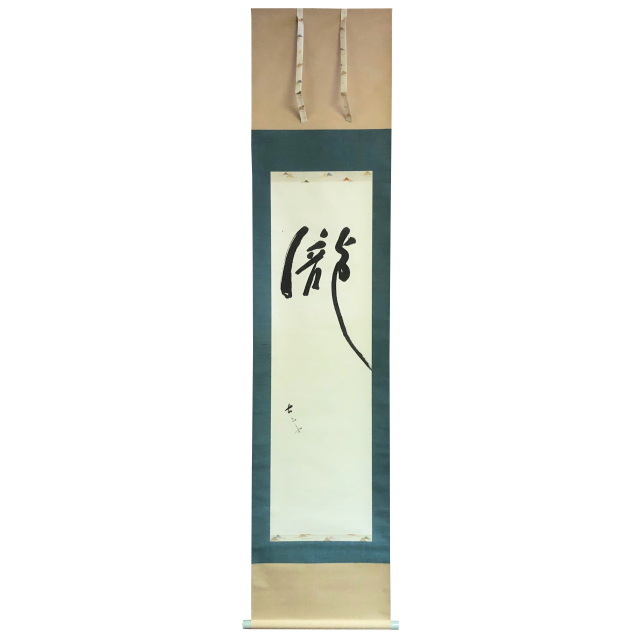
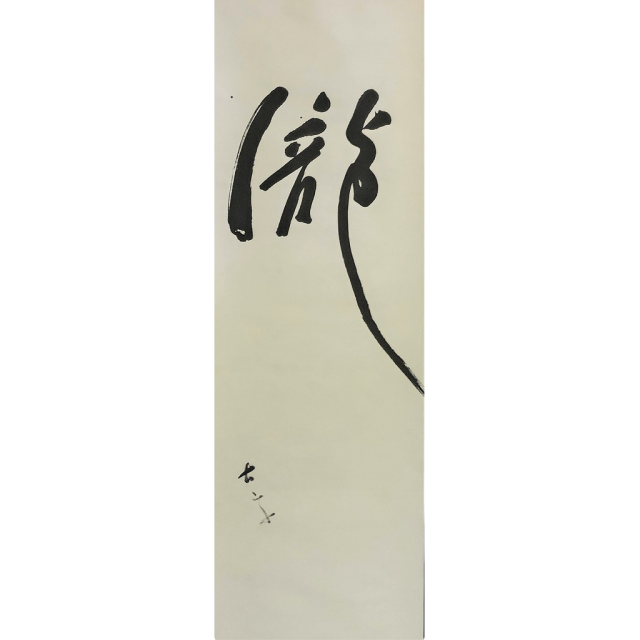
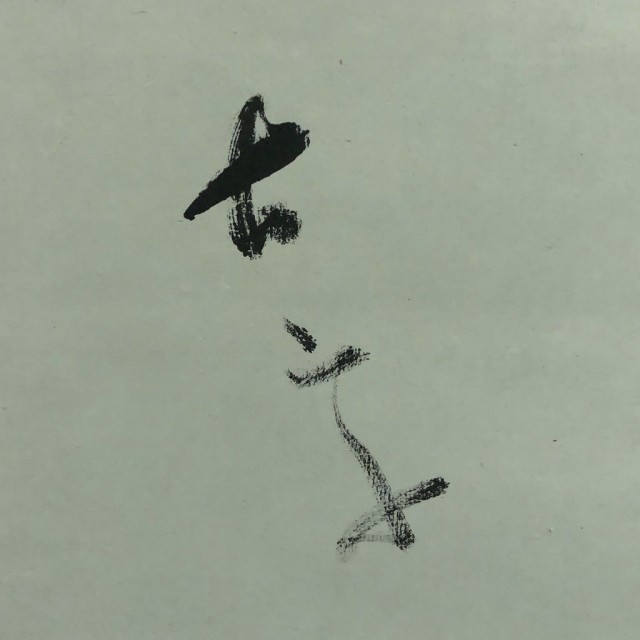
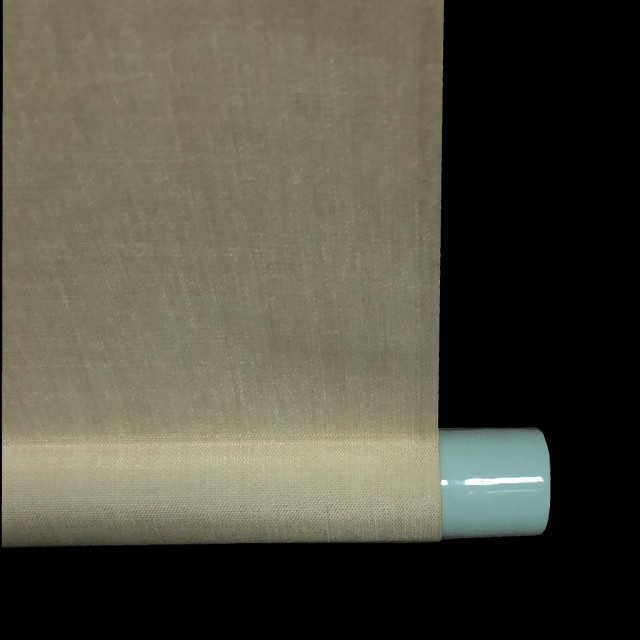
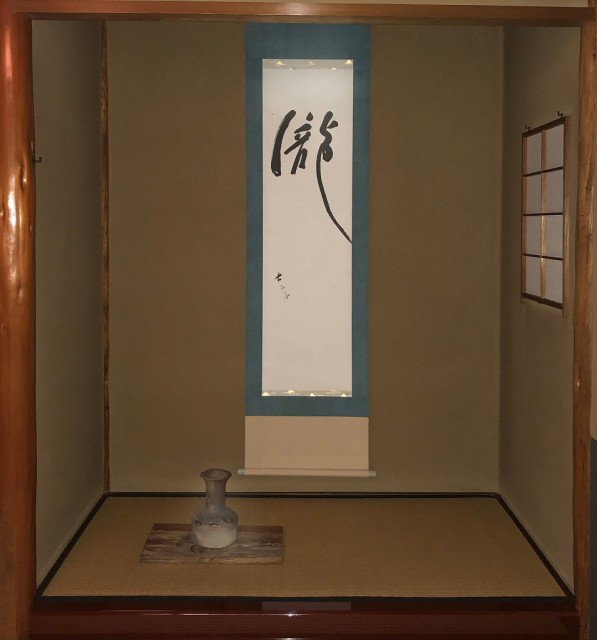
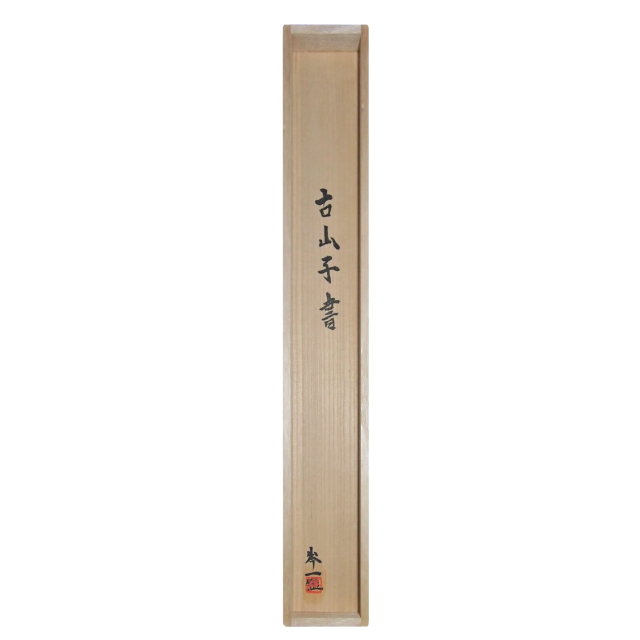
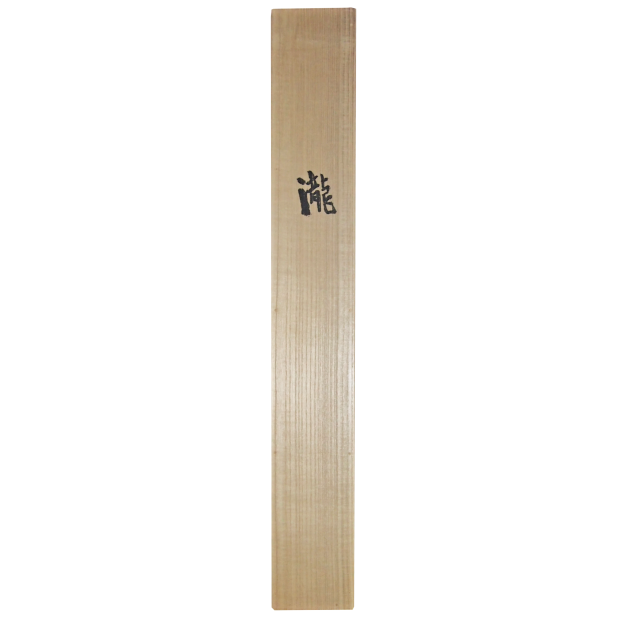
Box wrriten by Shinichi KOYAMA
W.44.5cm H.200cm
This is a hanging scroll featuring the single character "Taki" (Waterfall) by Fujio Koyama (1900-1975), a leading figure in Japanese ceramic research and a renowned ceramist. The dynamic flow of a waterfall, and even its sound, seem to emanate from the powerful yet elegant brushwork, where the subtle nuances of ink and the vigor of the brush are perfectly harmonized.
Notably, the jikusaki (roller ends) of this scroll are crafted from celadon. This makes the piece exceptionally rare, as it combines his profound knowledge as a ceramic researcher with his expert skills as a practicing ceramist. His aesthetic sensibility, meticulously applied to every detail, imbues this scroll with an extraordinary sense of refinement.
Furthermore, the box for this work bears the inscription of Shinichi Koyama, Fujio Koyama's eldest son and also a distinguished ceramist in his own right. This piece, showcasing the artistic lineage across two generations, holds significant artistic value. It will undoubtedly add a sophisticated touch to traditional Japanese spaces like a tokonoma or reception room, as well as to modern interiors.
Fujio KOYAMA
1900 - 1975
Ceramic researcher and potter. A major scholar of Chinese ceramics. Born in Tamashima-cho, Asaguchi County, Okayama Prefecture (now Tamashima, Kurashiki City). Kozanko is the name he uses when making ceramics. In his research on ceramics, he established his reputation as a world-class ceramist by discovering the ruins of the Tei kiln, a famous kiln from the Northern Song period in China. Until his later years, he conducted empirical research on Oriental ceramics and wrote and contributed to many books on ancient ceramics. In his later years, he opened the Hananoki Kiln in Izumi-cho, Toki City, Gifu Prefecture, where he produced ceramics. As a potter, he produced a wide variety of works including tea utensils.
Shinichi KOYAMA
1939 - 2006
The eldest son of Fujio Koyama, he began his pottery career at the age of 25, and was passionate about researching glazes. He continued to research glaze formulations such as tenmoku (iron) glaze, kaki (persimmon) glaze, aoheki (blue-green) glaze, and benigete (red-haired) glaze, always striving for new beauty. His style varied widely, including hananoki (unglazed yakishime), benige (Dutch), gosu (Sometsuke), sansai, akae, oil drop, and persimmon glaze, each of which was used as a technique in his own medicine basket, and he produced a rich variety of works with a sense of the seasons.
Contact about the Item
